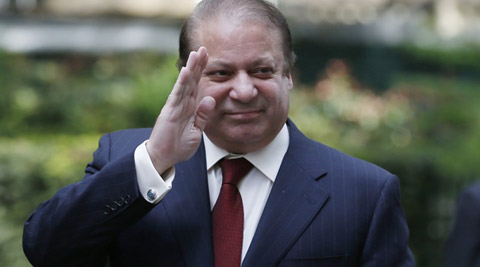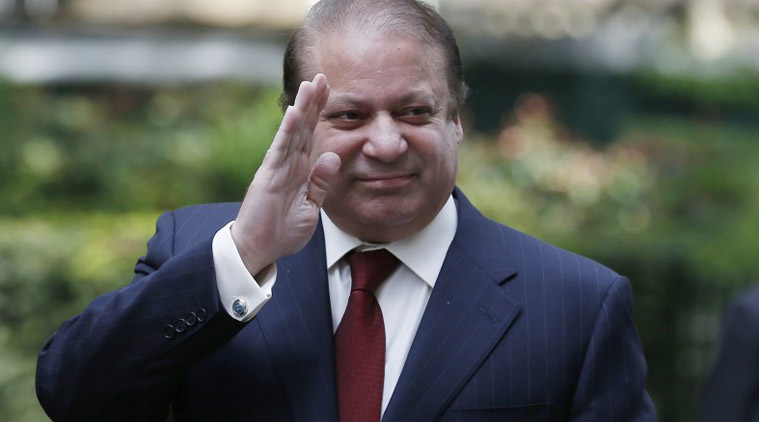Opinion Telescope: Echoes from the Valley
On Kashmir, channels pulled in one direction, RSTV restored perspective.

 Thereafter, NDTV 24×7, CNN News 18 and India Today ran the same footage with roughly the same conclusion: “Nawaz Provokes”, added India Today for good measure, after the Pakistan PM expressed shock at Burhan’s killing. (Source: File)
Thereafter, NDTV 24×7, CNN News 18 and India Today ran the same footage with roughly the same conclusion: “Nawaz Provokes”, added India Today for good measure, after the Pakistan PM expressed shock at Burhan’s killing. (Source: File)
There is violence in the Valley following the killing of Hizbul Mujahideen commander Burhan Wani by the Indian security forces. Are these “Made in Pakistan” plots to destabilise India or “homegrown terror”?
If you had watched television news over the last few days, there is only one conclusion: As analyst J.J. Singh put it, all terrorist attacks worldwide can be traced back to Pakistan (Times Now). His comment was in response to “exclusive” footage broadcast by the channel on Monday afternoon, showing Lashkar chief Hafiz Saeed and Hizbul’s Sayeed Salahuddin at a memorial meeting in PoK for Burhan Wani where they, reportedly, encouraged more Burhans. This provided “clinching evidence”, said the reporter, of Pakistan’s hand in the Valley. Yes, said the anchor, the theory of “homegrown terror” had been “completely demolished”.
WATCH VIDEO: Kashmir Protests: Visuals Of Curfew In the State
Thereafter, NDTV 24×7, CNN News 18 and India Today ran the same footage with roughly the same conclusion: “Nawaz Provokes”, added India Today for good measure, after the Pakistan PM expressed shock at Burhan’s killing. On NDTV 24×7, Barkha Dutt also criticised Pakistan’s involvement.
Right. So that’s that. TV debates on Monday and Tuesday took their cue from the PoK video and proceeded to discuss Pakistan’s role and its perfidy. “Pakistan’s open support” for terrorists, said NDTV. A “rich diet of jihad”, said Sushil Pandit on NDTV 24×7, “This is a war of Pakistan”, declaimed BJP’s Tarun Vijay and steered the discussion towards our western neighbour in what anchor Barkha Dutt said was a case of “local terrorists” — young educated boys out on the streets (NDTV 24×7).
WATCH VIDEO: Kashmir Protests Victim: 5-Year Old Zohra On How She Got Hit
The same geographical bias appeared on Times Now, India Today and CNN News 18. News X saw expert M. D. Nalapat travel, but in his case, it was back in time: The big mistake was in 1947, he said, when Nehru stopped short of cleansing Kashmir of invaders. And on Times Now, Mufti Nasir ul Islam insisted Kashmir was not part of India, setting off a wave of patriotism and protest on the channel.
Across channels, the narrative was pulling in Pakistan’s direction, which is fine except that it did not explain to the viewer why at least 30,000 people in the Valley reportedly had attended Wani’s funeral.
It was left to RSTV to put things in better perspective. A discussion with journalist Pushp Saraf, former bureaucrat Jayadeva Ranade, Kashmir interlocutor M.M. Ansari, BJP’s Seshadri Chari and JNUSU’s VP Shehla Rashid, identified the “disconnect” between the youth in Kashmir and the major political parties, the very high political awareness in the Valley, and the lack of “faith” amongst the youth in the administration and the government as contributing to “homegrown” unrest and terror.
Watch Video: What’s making news
The discussion moderated by Girish Nikam was by far the most informative and analytical, devoid of histrionics and too many references to Pakistan. It is ironic that it took Rajya Sabha TV, a publicly funded channel, to talk more about “homegrown” issues and less of cross-border factors than the private news channels.
Have you noticed the increasingly bad habit of TV news to stay with one story, news item for almost the entire day to the exclusion of almost everything else? Until Tuesday, it was Kashmir, Kashmir, Kashmir occasionally interrupted by Zakir Naik. On Wednesday, from the moment the Supreme Court delivered its verdict on the government in Arunachal Pradesh in the morning till well past 3 pm, that was the “breaking” headline, the “exclusive” news on the English channels.
As for Zakir Naik’s Peace TV, it’s nowhere that we can see but then as ABP told us, it doesn’t have a broadcasting license for India. What you can see on Tata Sky, are more than a dozen “devotional”, “spiritual” channels, which proselytise in their own, different ways. Will watch some and report on them next week.





